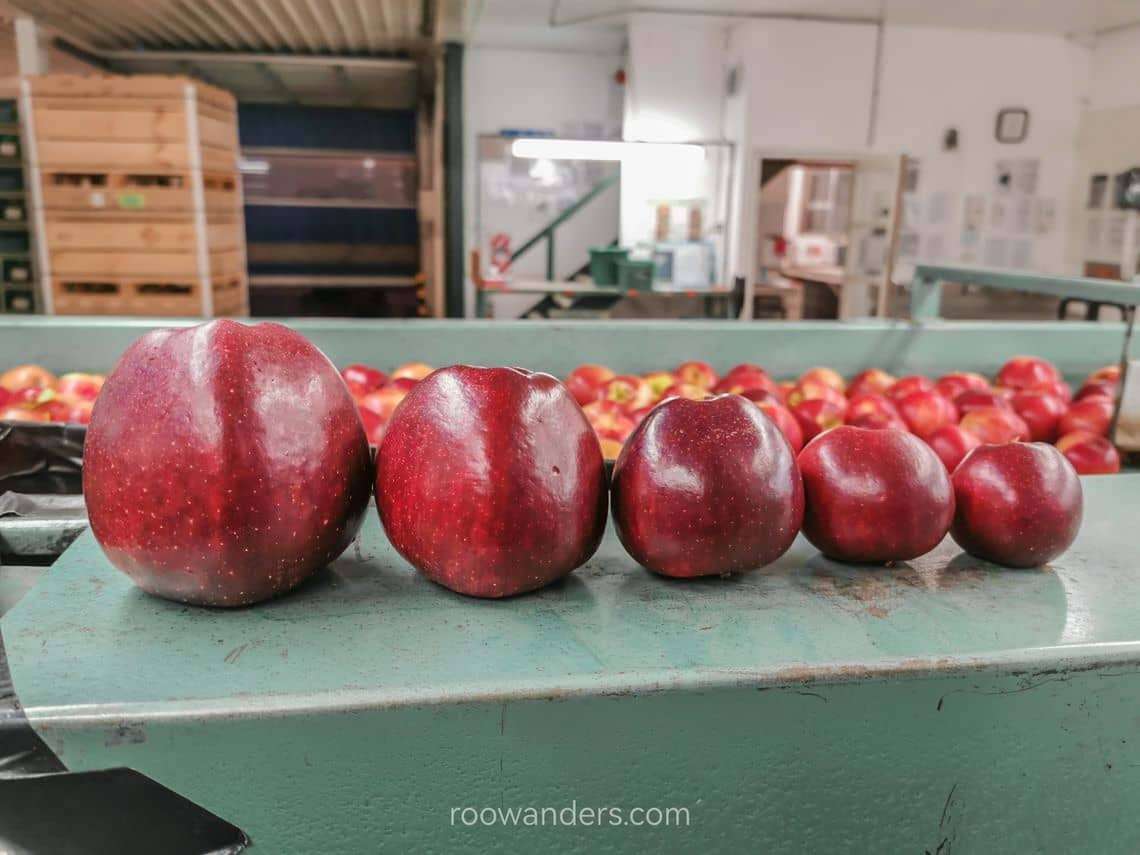
New Zealand Working Holiday Job #4: Apple Packhouse
I have changed jobs thrice within two weeks, all within the small town of Motueka: from opening mussels to packing pears, and finally packing apples in an apple packhouse.
I thought it would be the same for the apple packhouse. Maybe it would last a bit longer – for a month at most? – before I move on to other towns in New Zealand and try other seasonal opportunities.
But covid, again, changed all that.
A month turned into three, and I could apply for the conditional extension.
So what have the three months in an apple packhouse taught me? (There are lots of apple varieties..)
Here’s what a daytime packer and nighttime grader learnt about the post-harvest process for the humble apple in New Zealand. Read this for my experience as a kiwi grader! And also my short stint as an apple thinner/ trimmer.
I did this job from Mar – Jun 2020. Post may be updated periodically.

Brief Postharvest Orchard-to-Market Process
Apple Orchard >>> (Harvest) >>> Pickers > Storehouse > Packing >>> (Cool House) >>> Export > Market
Pre-packhouse | Picking
Apple picking season typically begins at the end of February.
Pickers start picking at least a fortnight before the packers start working. They need to accumulate a load of apples as grading-packing in the packhouse is fast.
The first couple of weeks in the orchard and packhouse might have scattered hours as fruits were just starting to ripen for harvest.
Pickers carry special pouches on the front of their body.
Domesticated apple trees are not as tall as you would have imagined. Maybe two of me stacked on top of each other.
Most of the apples are clustered at the bottom of the trees. But there would be some beyond the reach of an average picker, and ladders are used.
Once the pouches are filled, the apples are emptied into crates. A forklift moves the filled crates into a cold house or a truck. These would later be emptied into the packhouse on packing days.
Filled pouches could weigh as much as 20 kg.
In the packhouse I worked in, the orchards are located in Motueka and Nelson.
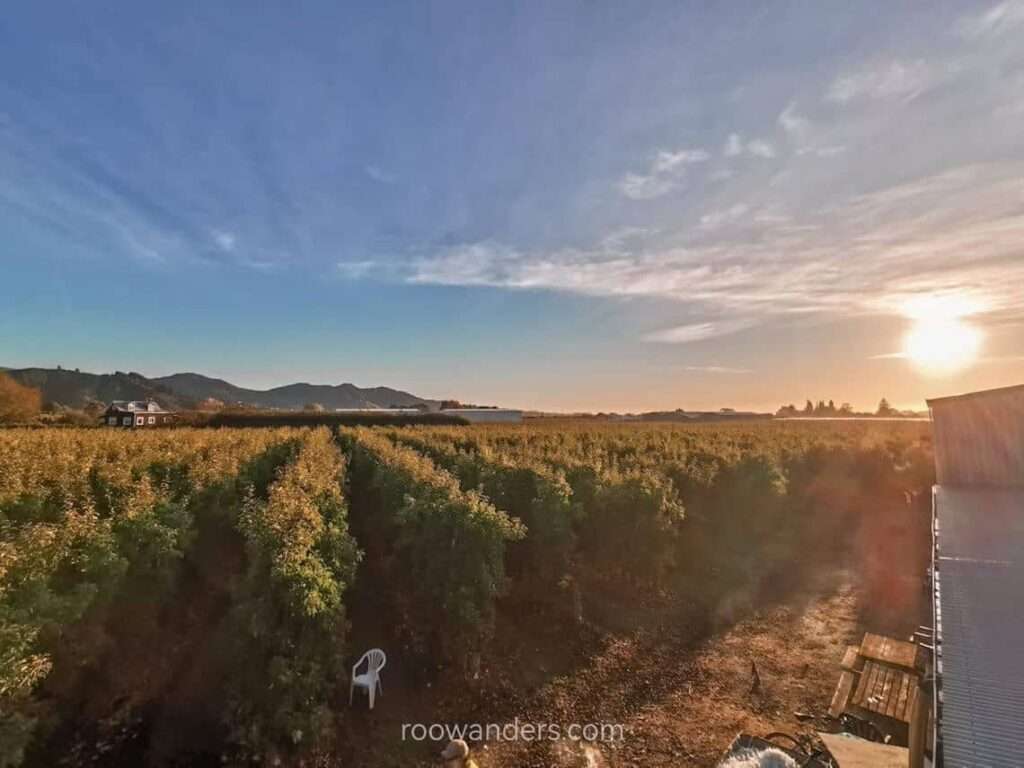
Packhouse | Grading, Packing, Stacking
Towers of crates are stacked within the packhouse premises.
A crate weighs around half a ton but is packed into separate trays and boxes within a few minutes.
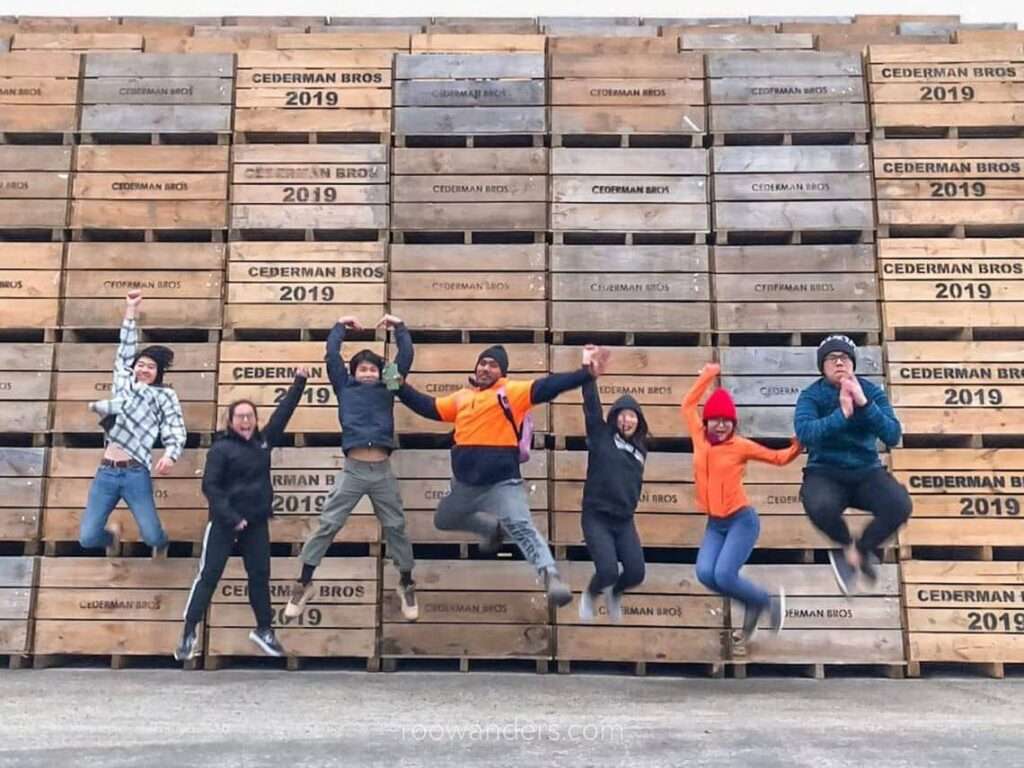
(1) Washing
The apples are unloaded from the crates into a cold water tank.
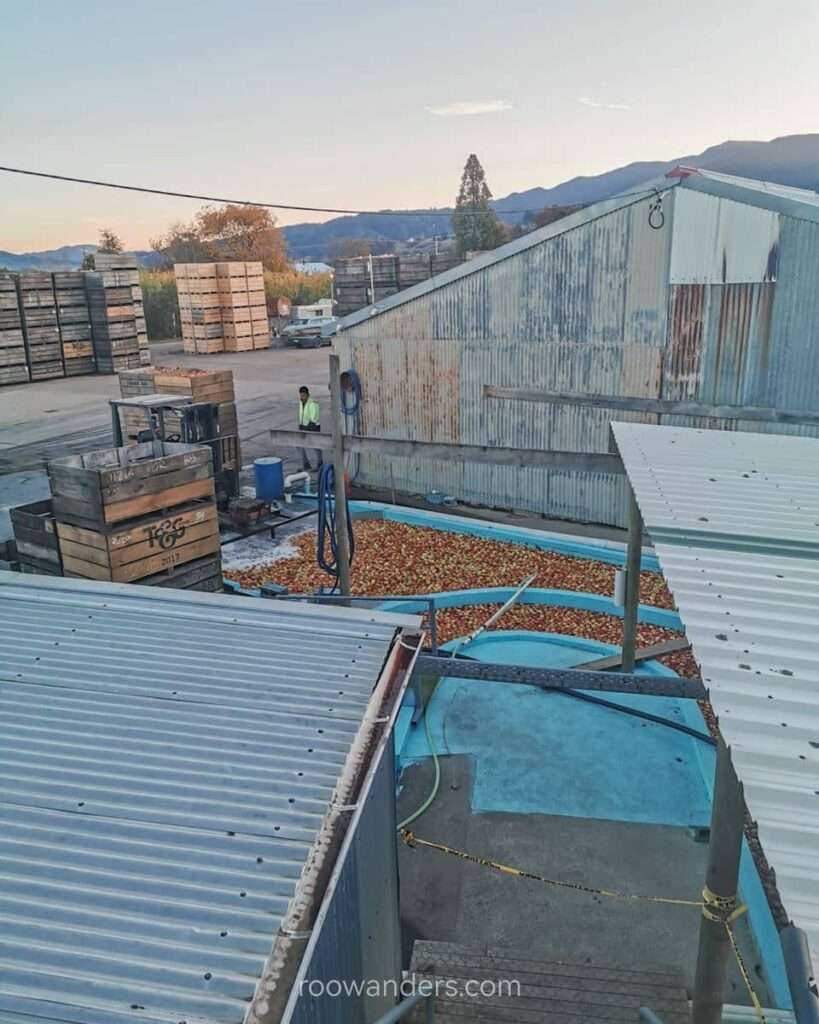
These apples are usually covered in dirt and maybe mould from debris, leaves or juices of rotten apples. Some disinfectant was added to the apple-water mix as I could smell whiffs of chlorine wafting out from the concoction.
(2) Grading
The cold apples roll up a series of conveyor belts and into the packhouse.
Graders situated on the front line pick up apples that do not meet the market quality – bruises, pokes, punctures, rotten, eaten, deformed.
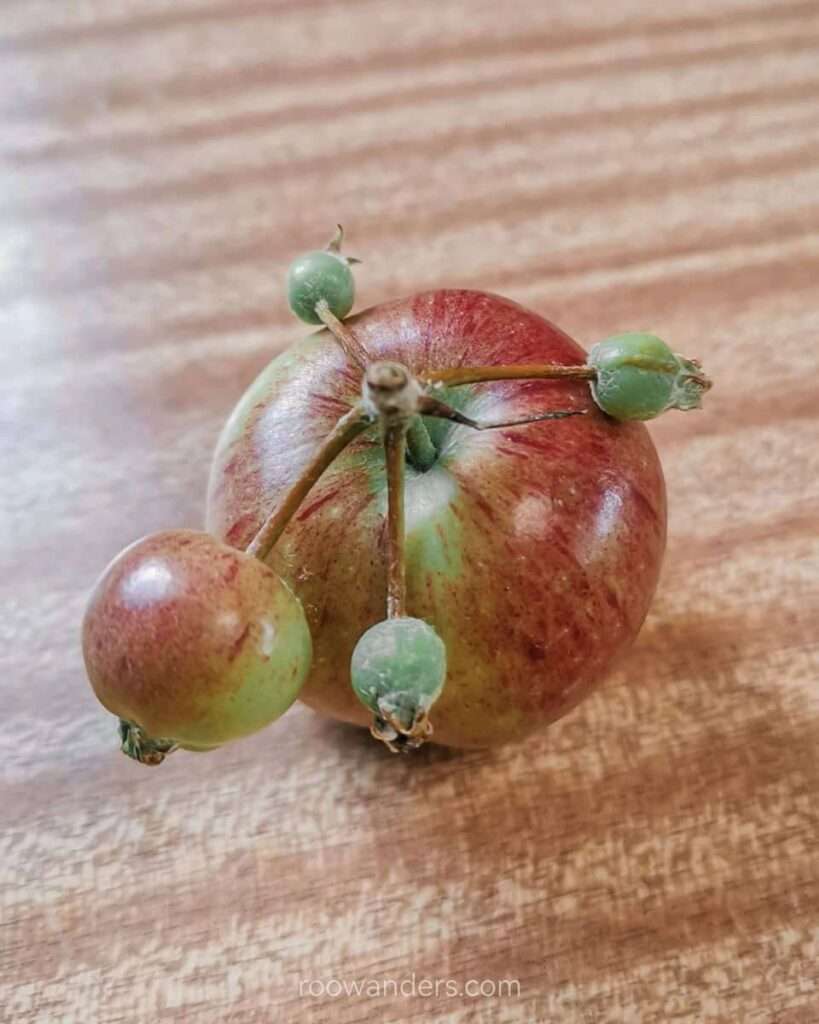
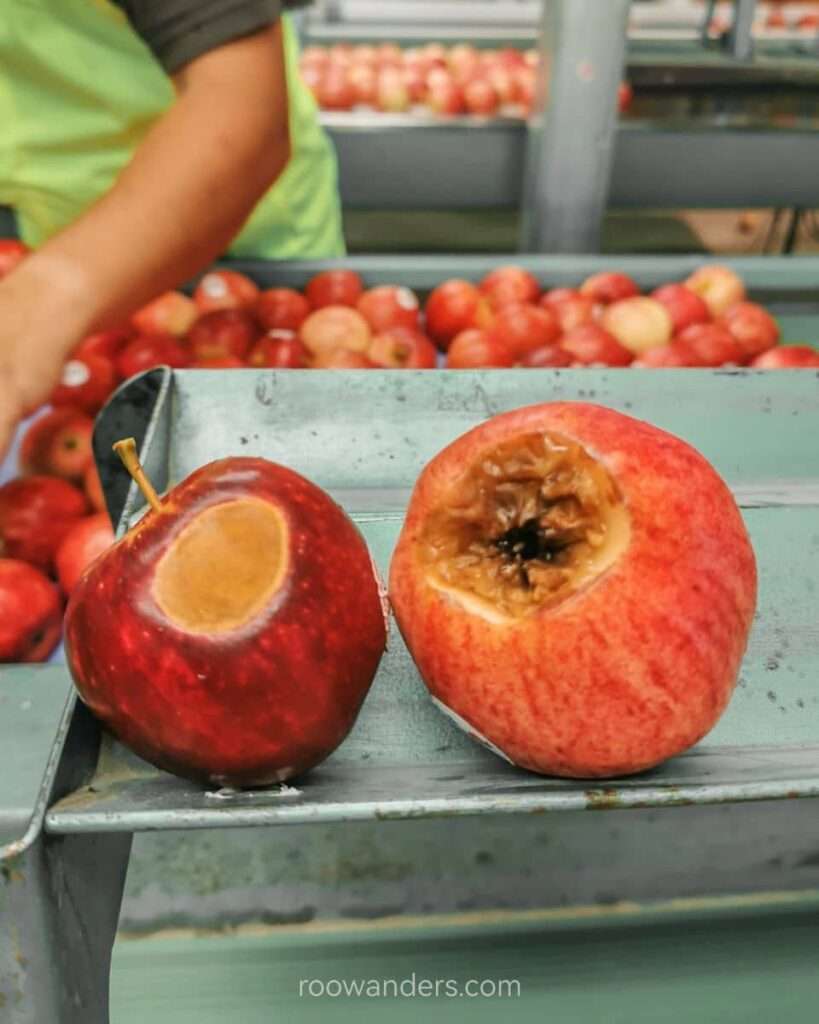
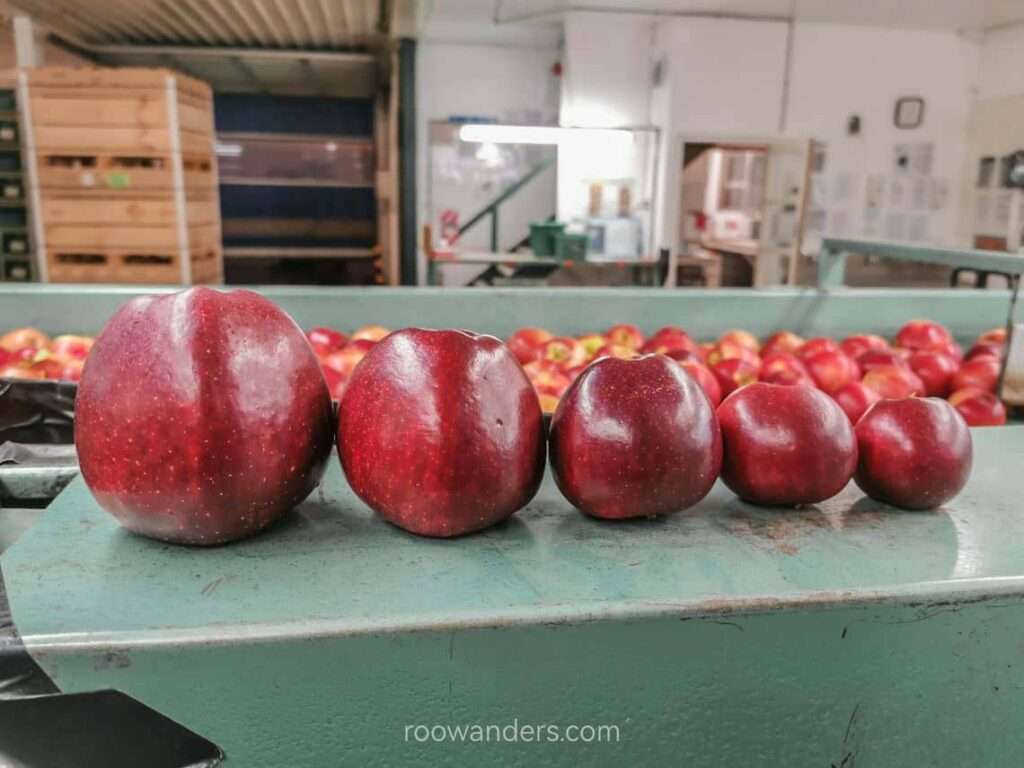
Quality apples of various sizes proceed through the belt and into the grading machine.
Cameras within the machine detect the sizes and shades of apples and transmit the data to software. The software decides the packing belt that the apple would fall into, based on its size and, sometimes, colour.
(3) Packing
The machine deposits the apples into the belt, and the packer has to do one last quality check and arrange the apples nicely onto the cardboard trays – reddest side up.
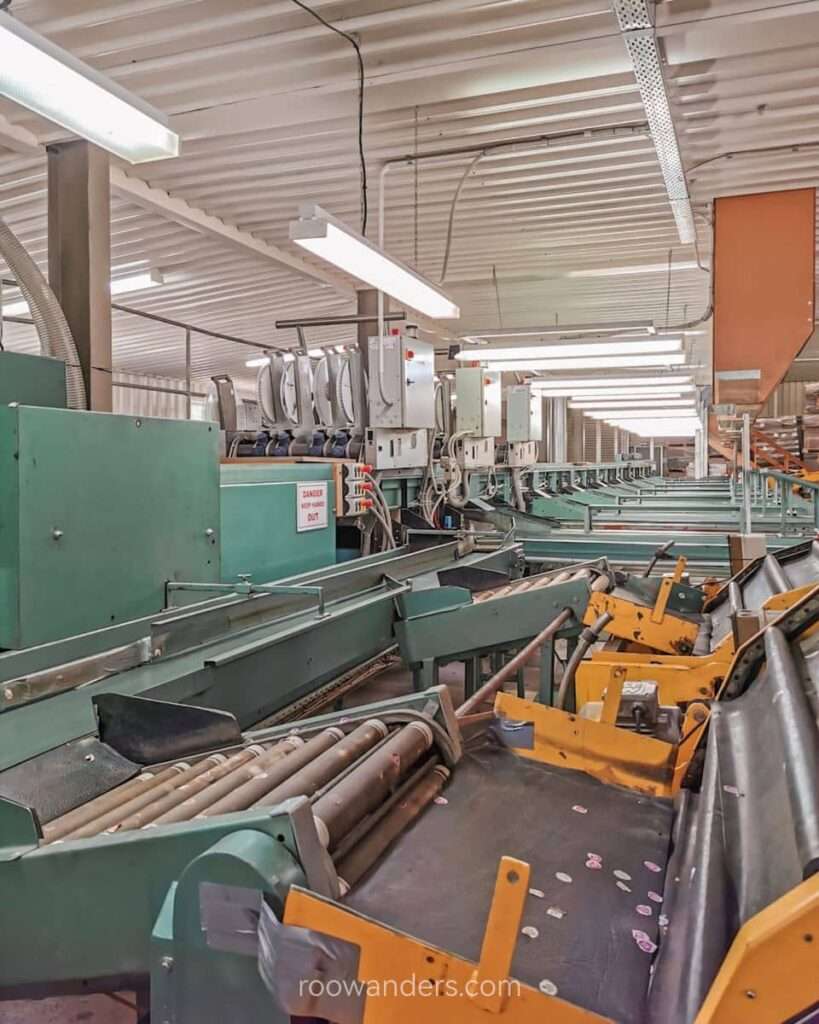
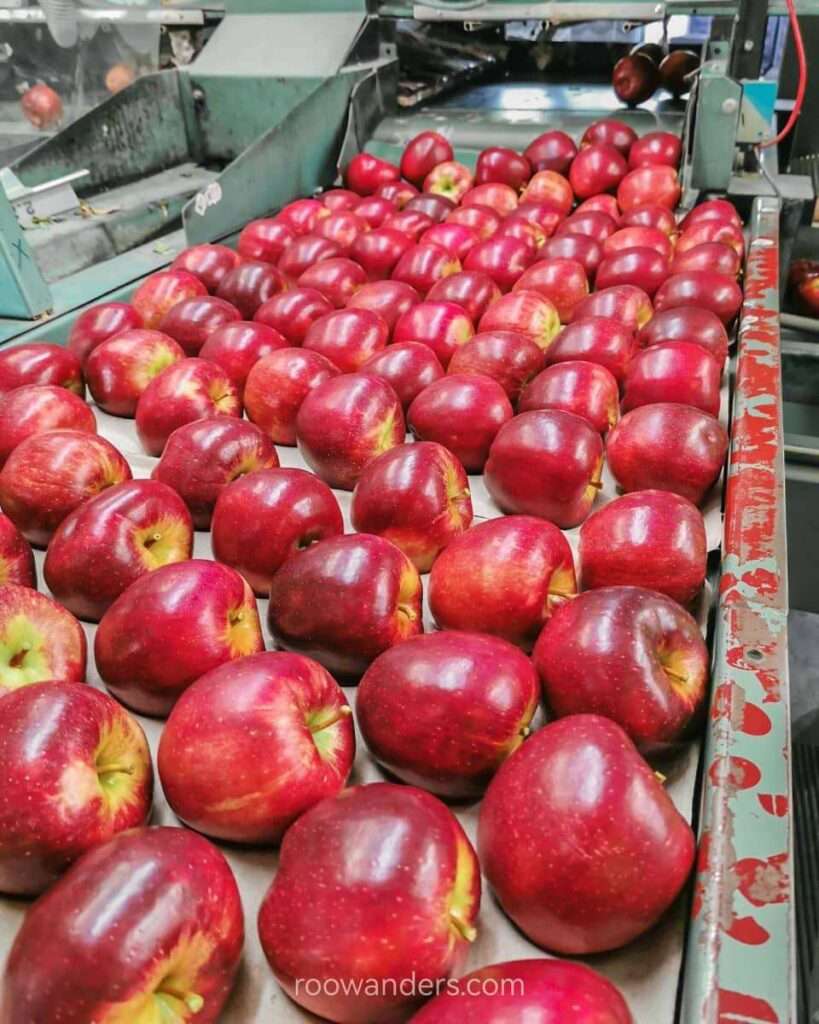
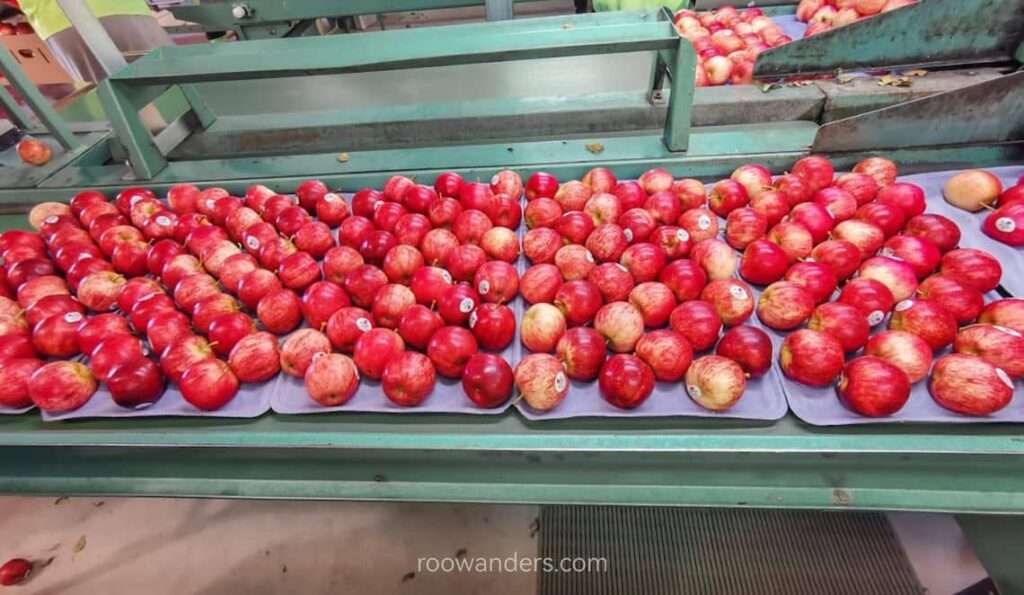
Once the tray is filled, a stacker stationed behind moves the tray into a box.
Once the box is full – it could take 5 – 6 trays – the stacker moves the heavy box onto a pallet.
This filled pallet is securely fastened before being transported back to the cold store or onto a truck.
You would find the apples in your neighbourhood fruit stall or the supermarket within a couple of weeks, locally or overseas.
Challenges in the Packhouse
Work is not difficult in an apple packhouse. But the monotony could be toiling.
Boredom. Our packhouse allows us to wear earpieces and listen to our audio. I took the opportunity to listen to audiobooks. Friends working in other packhouses were not as fortunate. Mindless work over long hours could lead to self-doubt and questioning.
Physical strain. Bad posture. Long hours of standing. Repetitive hand movements – packing, and discarding rejected fruits.
An Average Day for Me in the Packhouse
The regular working shift starts at 8 am and ends at 4.30 pm. There are two short 15 mins breaks and one long 30 mins lunch break, at 10 am, 12 pm and 2.45 pm.

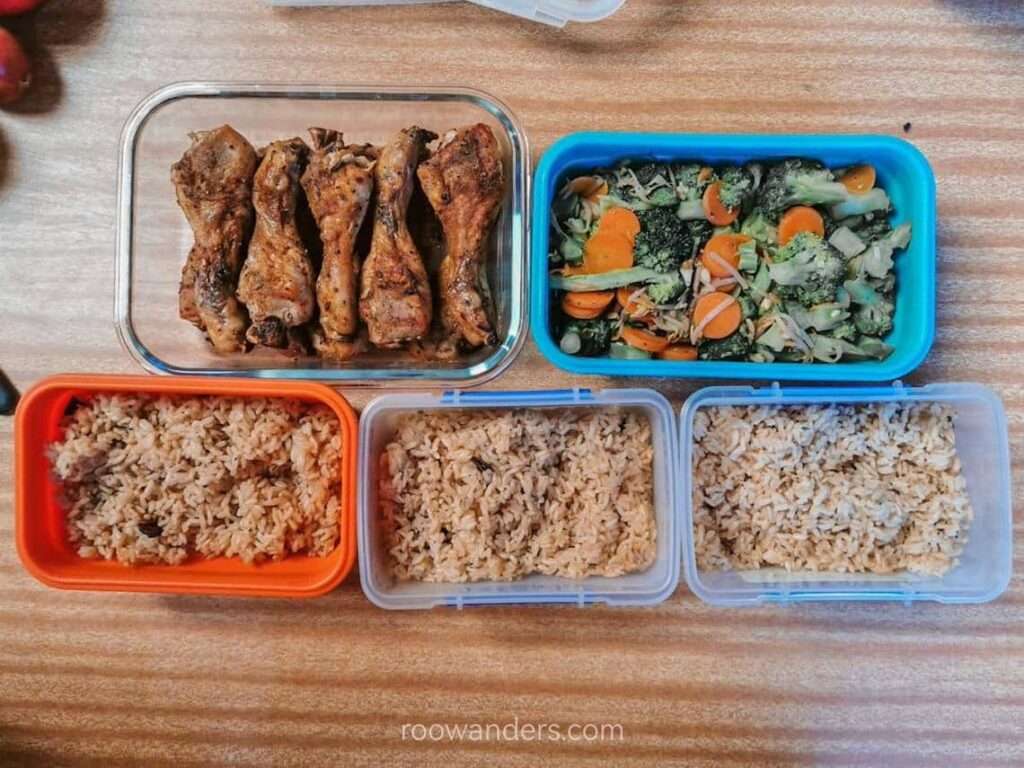
During the peak season, we have the option to go for the night shift, which starts at 5 pm and lasts till 9 pm. There is one short 15 mins break at 7 pm during this shift.
I work as a packer in the day and a grader and sticker operator in the evening.
Sticker Operator?
I don’t know the actual name of the role, but the task was to change the rolls of stickers on the grading machine when the stickers ran out.
What stickers?
Those annoying plastic stickers on your fruits. The sticker contains label information about the apple, e.g. variety, organic, and barcode for prices.
When COVID Strikes
This year is exceptionally unique given the global pandemic.
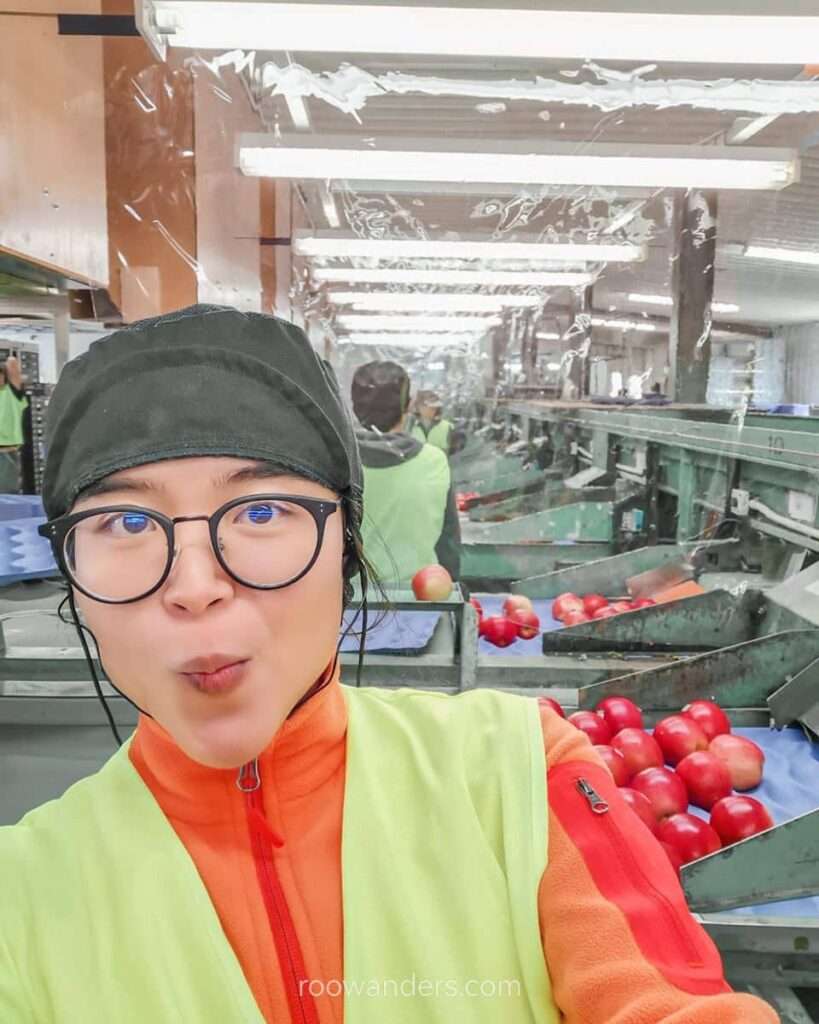
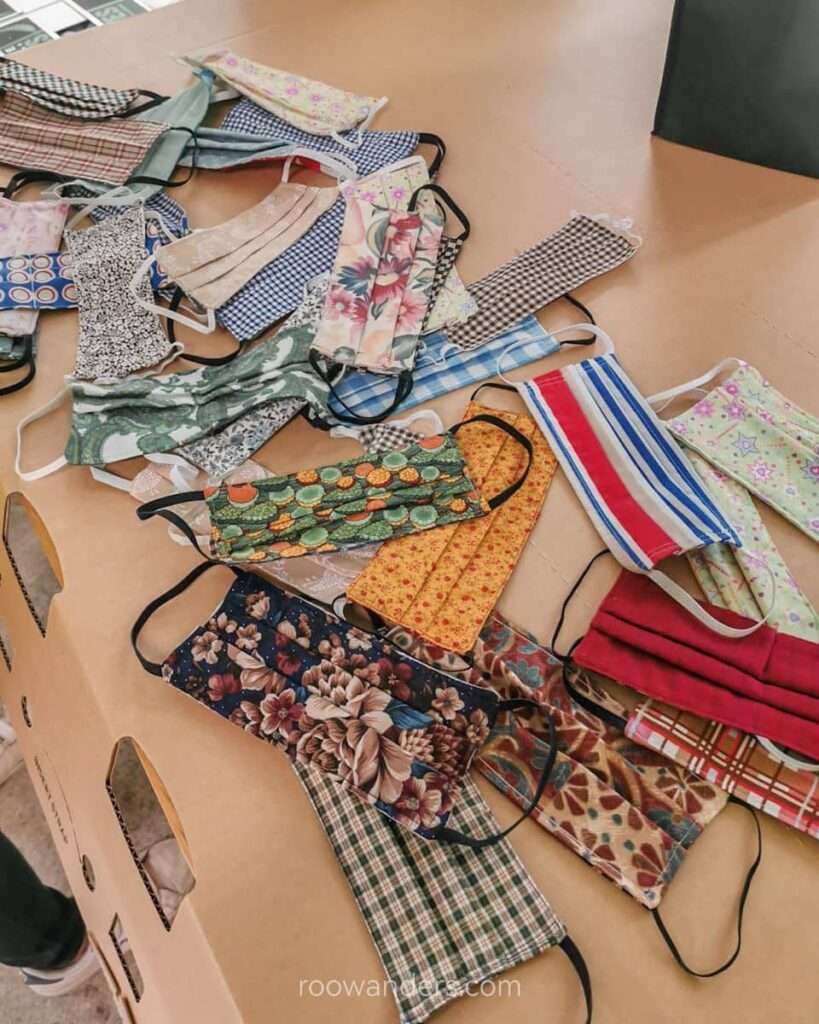
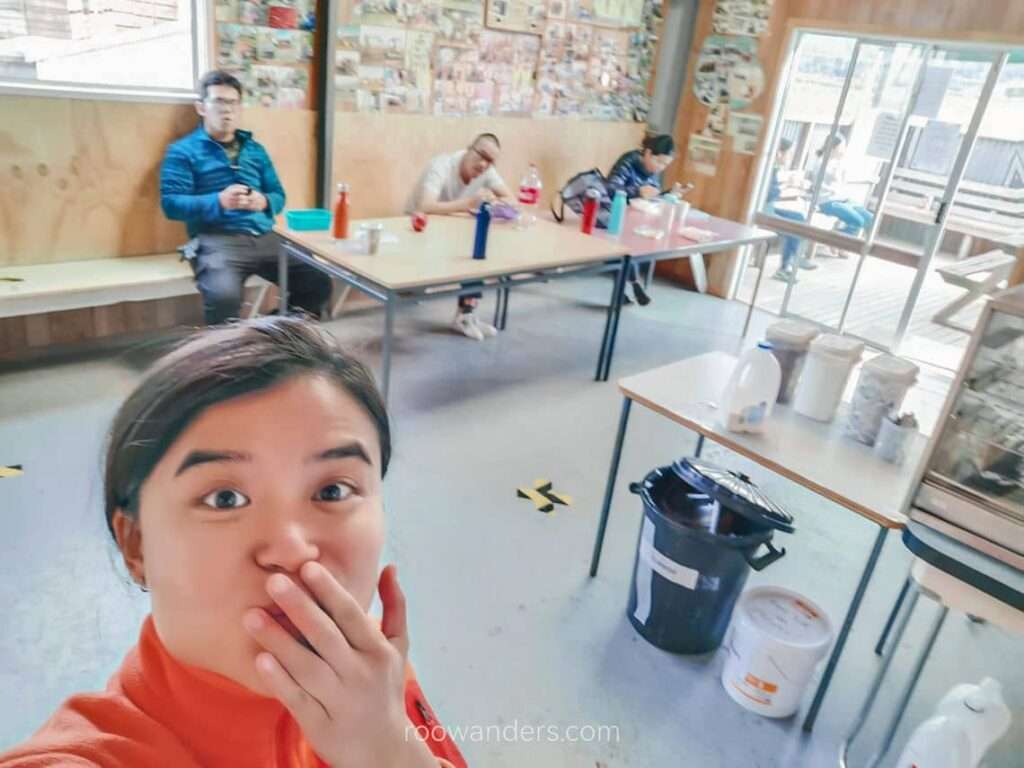
When most jobs in the hospitality sector were dissolved, essential jobs like ours were maintained. We were able to work as usual over the weekdays, but safety measures were set in place. We had to travel within our bubble and work between plastic sheets. Managers constantly urged us to wash and sanitise our hands and maintain at least a 2 m distance between each individual.
What I’ve Enjoyed Most
- Listening to my audio. A brainless job leads to a hyperactive mind. I need a distraction in the form of audiobooks to soothe my hopeless brain, and this packhouse allows for that.
- Fun colleagues, fun environment. Not just our packers, but also the Samoan stackers and our bosses.
- Funky apples. We’re used to apples found in the market. How about oddly shaped ones that look like a bum or a heart?
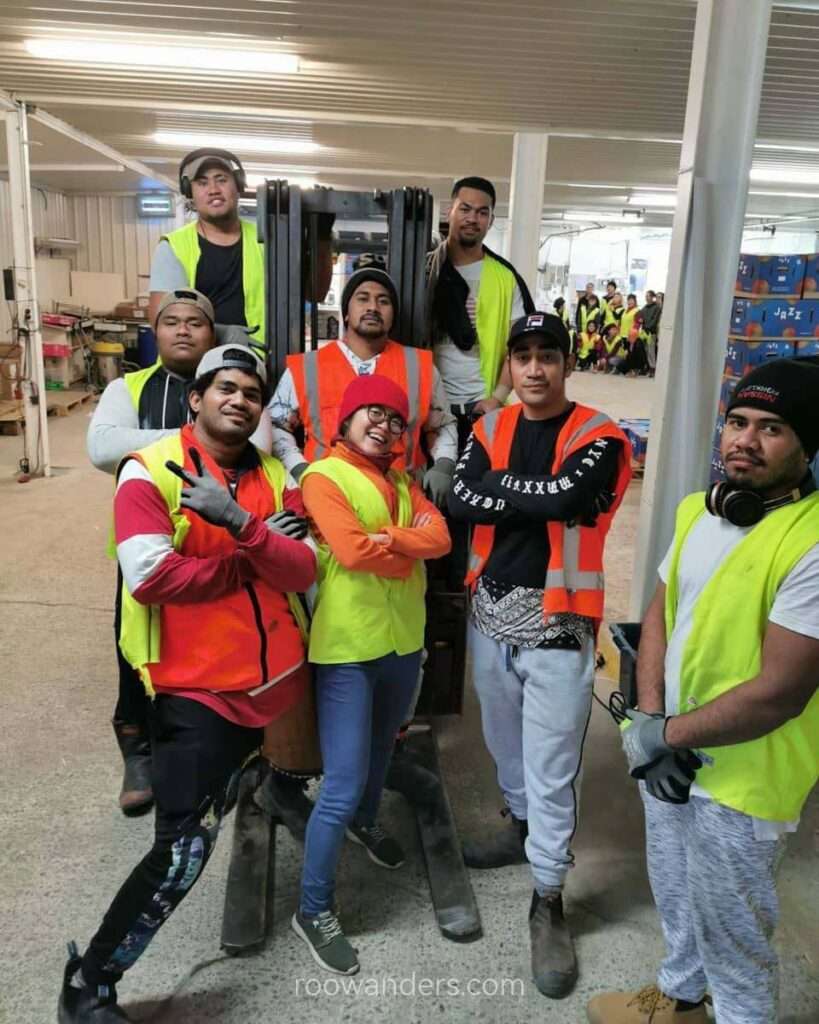
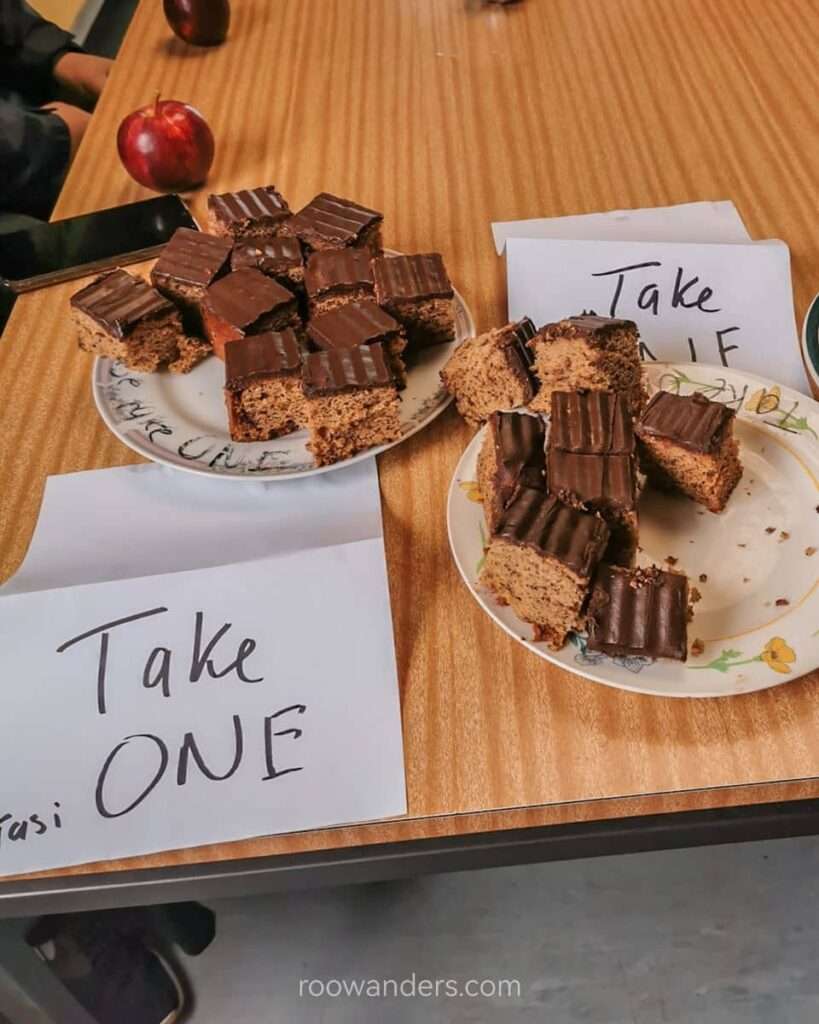
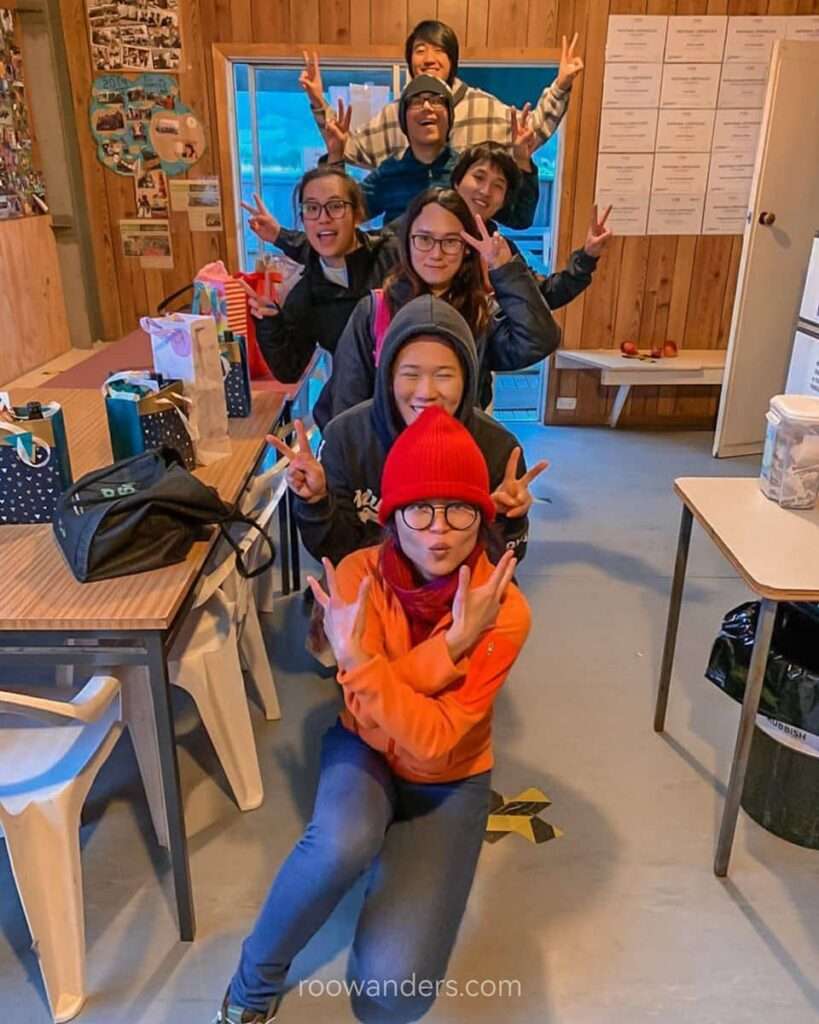
In all, I find myself fortunate to be working with this packhouse and to remain employed throughout the whole lockdown ordeal. The stint may probably be my longest work term over my working holiday. Not only do I get an opportunity to know more about post-harvest processing, but I was also an involved member of the operation.








